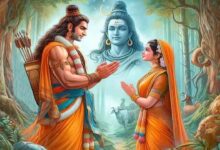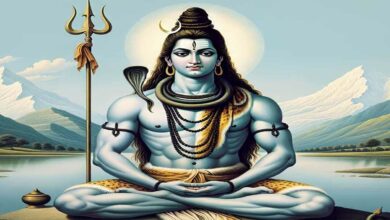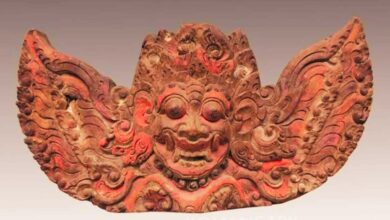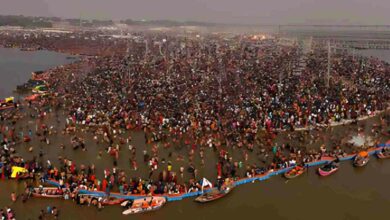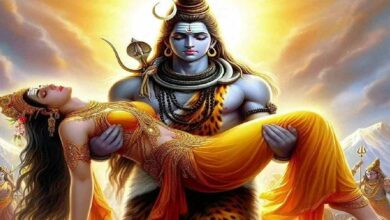How was Mathura named? What is the importance of Mathura? Know
Mathura: A significant position in India’s religious and cultural legacy is held by Mathura. In addition to being well-known for being the birthplace of Lord Krishna, this historic city has a fascinating and mysterious past and name. Numerous epics, historical accounts, and mythical writings make reference to Mathura. Its naming procedure has undergone several phases, and numerous names have been used to leave their imprint.
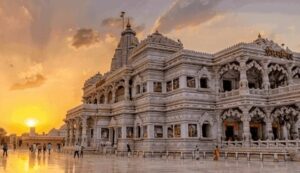
In this post, we’ll go into great depth on Mathura’s naming and explain how the city got its name from Madhupur, Madhuvan, Madhupuri, and other variations. In addition, we will discuss its cultural, mythical, and historical relevance.
Mathura’s ancient name and history
Mathura’s original names
In the past, Mathura was referred to as Madhupuri, Madhupur, Madhuvan, and Madhudanav Nagari. Mythological writings such as the Vedas and the Ramayana contain the first references to it.
King Madhu, regarded as an old Yadava dynasty monarch, inspired the name Mathura.
This city is known as Madhupur in the Valmiki Ramayana.
Another theory holds that Madhu Daitya, a strong demon who established Mathura, is the reason for the city’s name. Some legends describe Madhu Daitya as a powerful king who established a beautiful and thriving city in the middle of thick jungles. Lavanasura, the son of Madhu Daitya, expanded this metropolis and ruled over this region.
Shatrughna’s conquest of Mathura
The Ramayana states that Shatrughna, the younger brother of Lord Shri Ram, received orders to assault Madhupuri (Mathura) while he was in charge of Ayodhya.
Lavanasura was slain by Shatrughna’s onslaught on Madhupuri.
Following Lavanasura’s murder, Shatrughna consolidated his rule over this territory.
Due to the vast trees that encircled the city on all sides, he gave it a new appearance and made it renowned as Madhuvan.
Madhuvan was called Madhupuri and ultimately Mathura throughout time.
Mathura’s historical significance
Mathura’s location in antiquity
The Mahabharata, Mauryan, Kushan, and Gupta eras are all included in Mathura’s history. For ages, this city has served as the epicenter of India’s political and cultural life.
The Surasena Empire’s capital was Mathura in the sixth century BC.
The major hub of the Yaduvansh, which subsequently came to be connected with Lord Krishna, was this city.
The fact that Mathura is also referenced in Buddhist writings indicates that this city has been crucial to the growth of Buddhism.
Mathura’s function during the Mahabharata era
The Mahabharata claims that Mathura was the birthplace of Lord Krishna and the capital of the Yadavas.
This city was ruled by Kans, who was Shri Krishna’s maternal uncle.
When Shri Krishna halted Kansa’s crimes and rescued Mathura, the population was alarmed.
Even after Shri Krishna moved to Dwarka, Mathura was always regarded as the spot where he was born.
Additional Mathuran historical names and their meanings
There are several references to Mathura in different sources. The most notable of them are:
Madhupuri: The Madhu demon is the reason for this name.
Madhuvan: It was encircled by thick trees when Shatrughna conquered it.
Madhupur: The Madhu demon and his offspring are also connected to this name.
When Mathura became the capital of the Sursena Empire, the name Surasenpuri gained popularity.
Brajbhoomi: Because of Shri Krishna, it became known as Brajbhoomi.
Mathura’s cultural and religious importance
Mathura and Lord Shri Krishna
The birth of Shri Krishna is linked to Mathura’s most significant religious importance. Kansa’s jail was the birthplace of Shri Krishna.
Today, the Krishna Janmabhoomi Temple is a center of devotion dedicated to his birthplace.
This city is home to many significant locations, including Govardhan Mountain, Radhakund, Vishram Ghat, and Dwarkadhish Temple.
Mathura and Buddhism
In addition to being a major hub for Buddhism, Mathura has also been a hub for Hinduism.
Buddhism had an impact on Mathura throughout the Kushan era (100–300 AD), and many Buddhist stupas were constructed here.
Here, the renowned Buddhist art form known as Mathura emerged.
Mathura and Jainism
For Jainism, Mathura is also a sacred site.
Lord Neminath, the 24th Tirthankara, is said to have been born there.
This area is home to several well-known Jain temples.
The significance of Mathura in its modern form
A hub for pilgrimages and tourism
Mathura has become a popular religious travel destination.
Thousands of devotees visit Shri Krishna Janmabhoomi and other temples each year.
On the occasions of Janmashtami and Holi, which draw followers from all over the globe, lavish activities are held here.
Mathura and Vrindavan’s Holi and Rasleela festivities are particularly well known.
Impact on the economy and culture
In addition to being a sacred city, Mathura is also a business and industrial hub.
Here, the dairy sector, handlooms, sculpture, and tourism all have a significant impact.
An essential component of India’s spiritual identity is this city.
Mathura’s designation is not only a historical occurrence; it has strong religious, cultural, and traditional ties. This trip from Madhupuri to Mathura is a representation of the growth and advancement of Indian culture, not simply a name.
One of the most significant locations in India is Mathura because of its history, religious beliefs, and cultural legacy. Mathura has been at the heart of India’s spiritual legacy for ages, whether it is because of Shatrughna’s campaign of triumph during the Ramayana, the birth of Shri Krishna during the Mahabharata, or its current status as a popular pilgrimage destination.
Questions and Answers (FAQs)
1. What was Mathura’s original name?
Madhu Daitya was the one who established Mathura under the former name, Madhupuri.
2. What is the origin of the name Mathura?
It was once known as Madhuvan, then Madhupura, and eventually Mathura after Shatrughna’s murder of Lavanasur.
3. What role does Mathura play in history?
Lord Krishna was born at Mathura, which is a significant destination for Jains, Buddhists, and Hindus.
4. How and when did Mathura gain notoriety?
In the sixth century BC, it was made the capital of the Surasena Empire, and Lord Krishna helped it gain notoriety.
5. Which are Mathura’s main sites of worship?
The main religious sites here include Radhakund, Govardhan Parvat, Dwarkadhish Temple, Krishna Janmabhoomi Temple, and Vishram Ghat.

